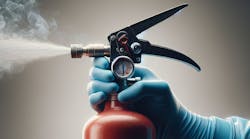Perhaps, on a rare occasion, I have been a bit critical of the pharmaceutical industry. My most common complaint has been the “If it was good enough for 1960, why can’t we still do it this way?” attitude of management towards process analysis. Now, in fairness, even the EPA waits until tools are available before lowering limits on pollutants. Why then should pharma companies be expected to run before walking?
One of the most prolific inventors (no, not Edison, even though I am a native Jerseyite, too) of all time was “The Maestro” Leonardo da Vinci. An avid scientist, he reportedly devised a computer, made of gears and pulleys. He studied flight and made excellent gliders. It is even claimed that he invented the helicopter. Why then didn’t he commute to work in this wonderful invention?
Well, two minor components were missing: an internal combustion engine (or electric power) and gasoline. Picky, picky, picky, you may say. But, merely designing a computer didn’t make it work without the proper components. What was needed was development of ancillary tools, such as electric motors, transmission lines, power stations, and, of course, transistors for the computer to be built. The helicopter needs modern steel, composite materials, internal combustion, refined petroleum products, and the like to fly.
As a parallel example, the mere writing and posting of a PAT Guidance by FDA didn’t make PAT happen on-the-spot. One small example of time-consuming details was the wireless NIR instrument, built at Pfizer (Sandwich, U.K . . . but, what has the site done for Pfizer lately?) by Zeiss. It took some time and more than a little money, but the concept of a wireless NIR spectrometer was proven as feasible. Since that time, just a few years ago, smaller and more powerful models have arrived on the market. There are even several handheld models available now. Wireless and/or handheld Raman instruments are also on the market. In fact, small, compact, and wireless seem to be the watch words for all new instruments.
These seemingly unrelated developments are critical to designing a successful PAT program. Why? Simply stated, if we want to monitor (and understand and control) a process as disparate as making a pharmaceutical dosage form, we need to maintain a lot of measuring points. In a typical process, we have incoming raw materials, dry mixing of excipients and API(s), granulation and drying, tabletting, and coating in the process. If we used, for example, near-infrared for most of these processes, the cost and mechanics would be daunting. Since the various steps tend to be in different rooms, a simple process monitor with multiple fiber optic probes would be almost impossible to use. (And, if we use a V-blender, we cannot measure it on-the-fly with a fiber probe—at least not for more than one rotation.) If we install a number of explosion-proof units throughout a production facility, the cost would be prohibitive.
Fast forward to present. Now we have truly portable monitoring instruments, small enough and inexpensive enough to place all across the process stream, allowing for full exposure and control. Add to that computer power: faster, more memory, multi-tasking abilities, and lower cost. And we have excellent examples of software programs, written to be integrated with most popular instruments and used to not only monitor, but control all the parts of a process (continue or end drying or mixing without human intervention).
Now, we can see the truth in the statement, “Each batch is a validation batch.” (Of course, that is the very statement that drove many QA people into early retirement with nervous tics and cold sweats.) We were told, in effect, to monitor and control each step of the process (an idea that actually stems from the body of text in cGMPs), but just weren’t given any clue how to do that. It seems that there was a method to the FDA madness: without specifics, vendors and analysts were allowed to use, as it were, their full knowledge and ingenuity. (Ajaz Hussain once told me, “If we simply mention some technique, such as NIR, everyone will rush out and only try to apply NIR. Because we want the best techniques used for each step, we simply tell the process analysts to use ‘their best scientific judgment.’”)
So, after seeing some really neat tools at this winter’s IFPAC conference in Baltimore, and talking with many vendors, I am really beginning to see a light at the end of the tunnel . . . and it isn’t an on-coming train, for a change.


